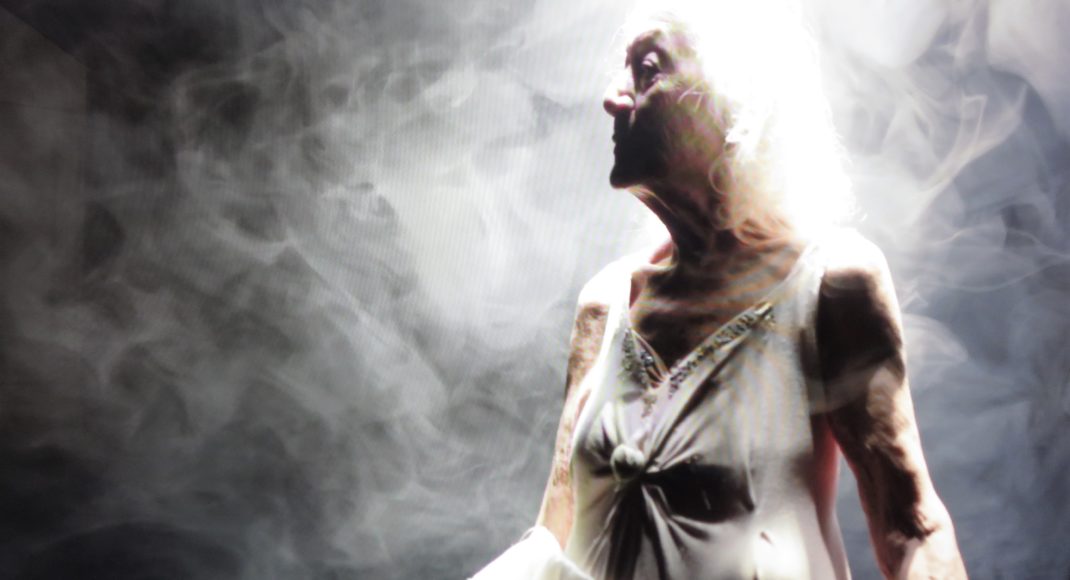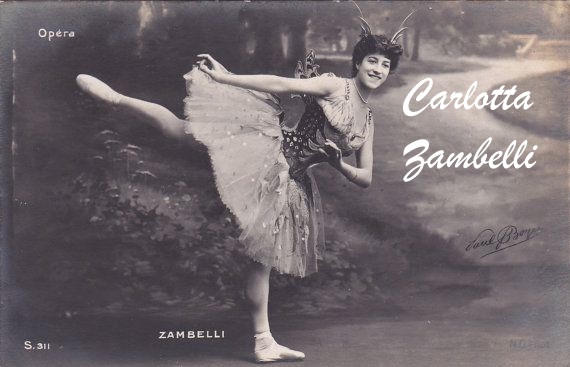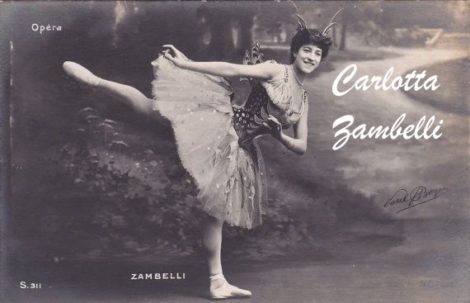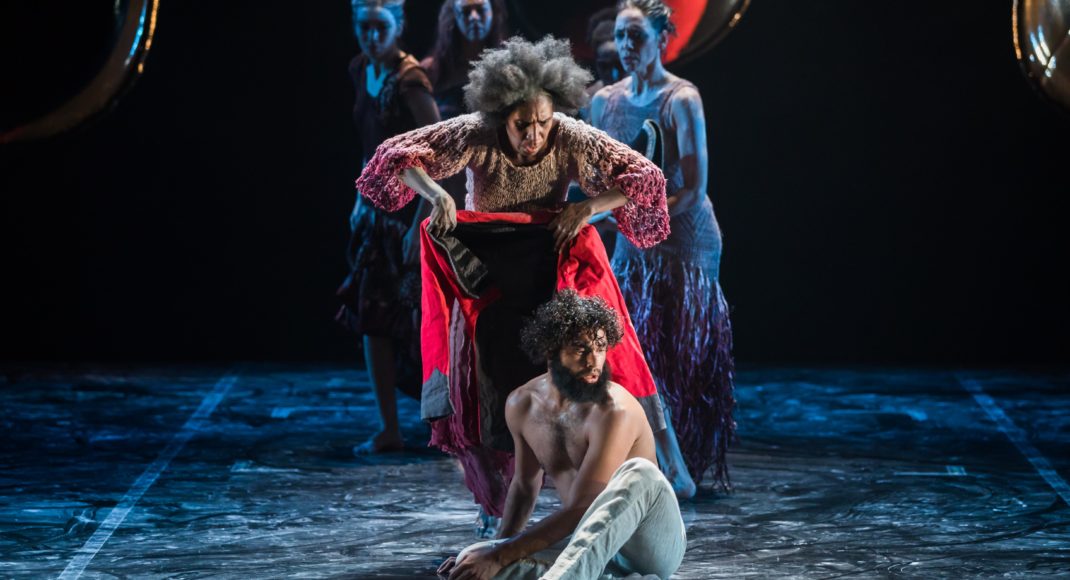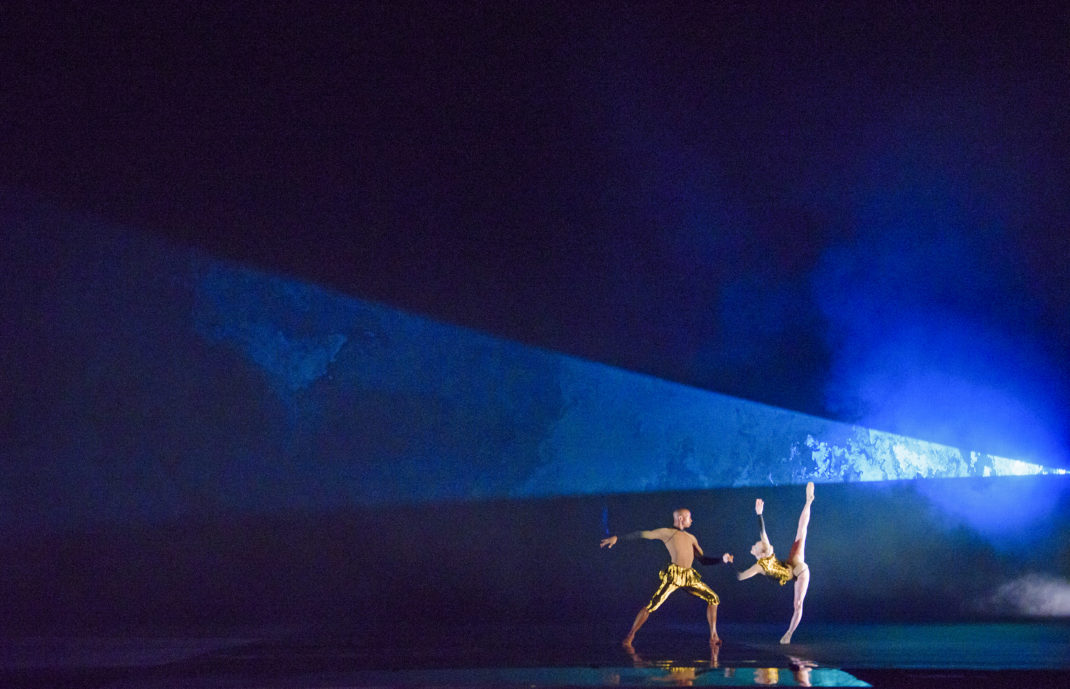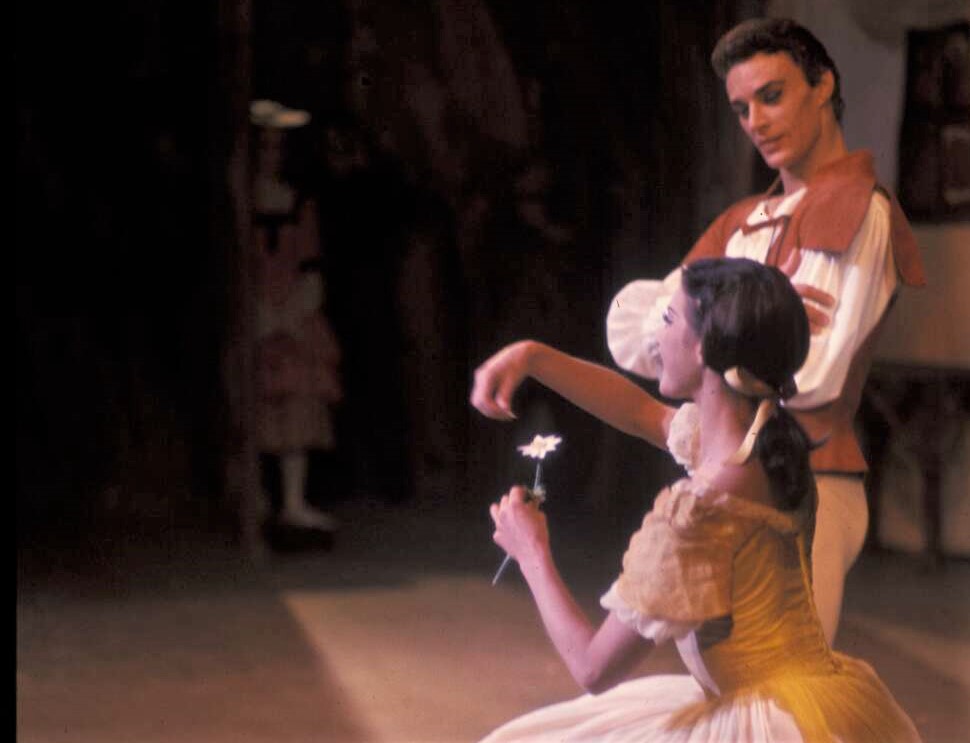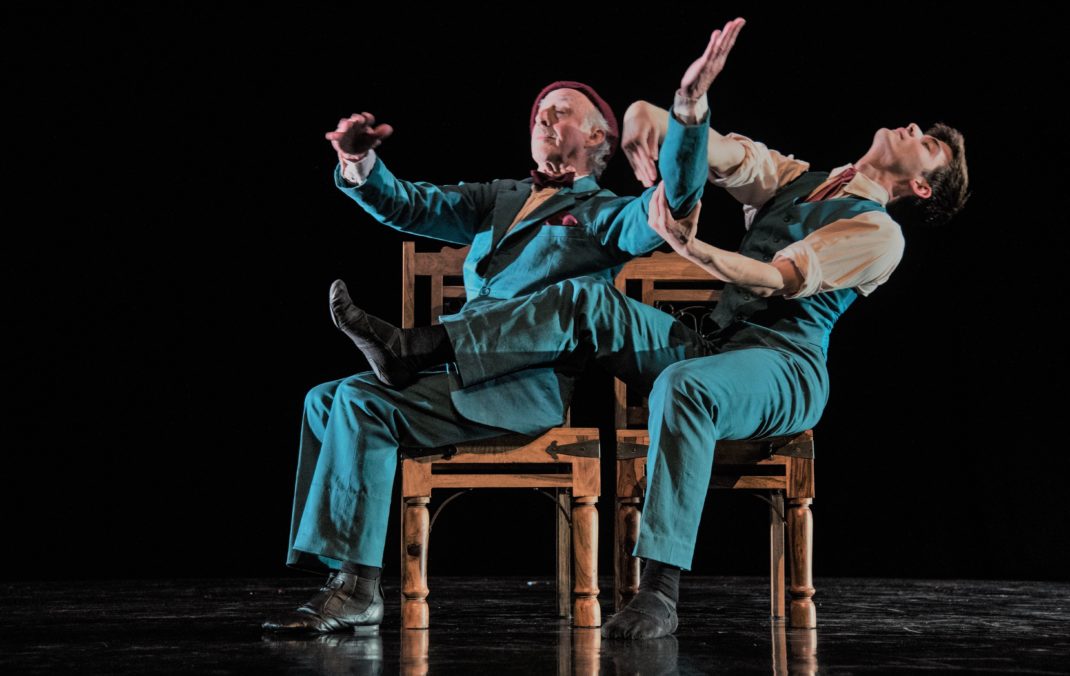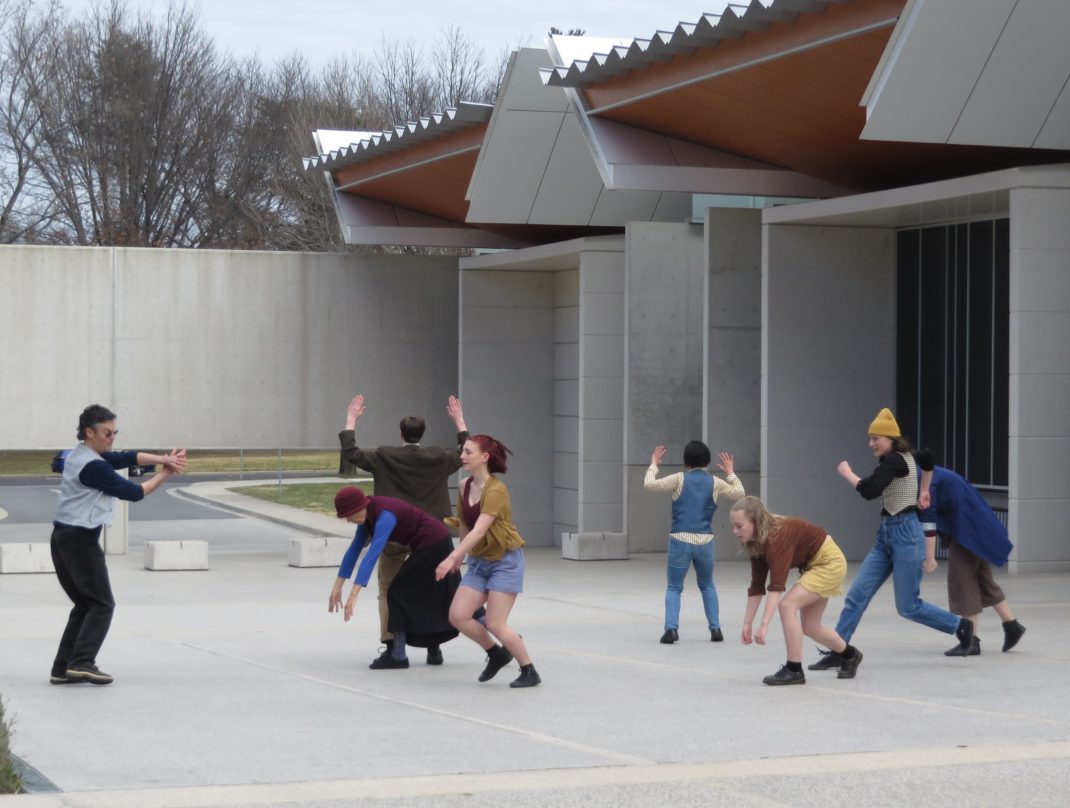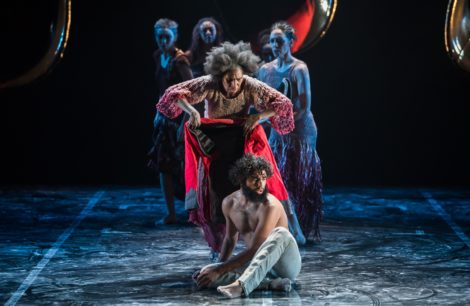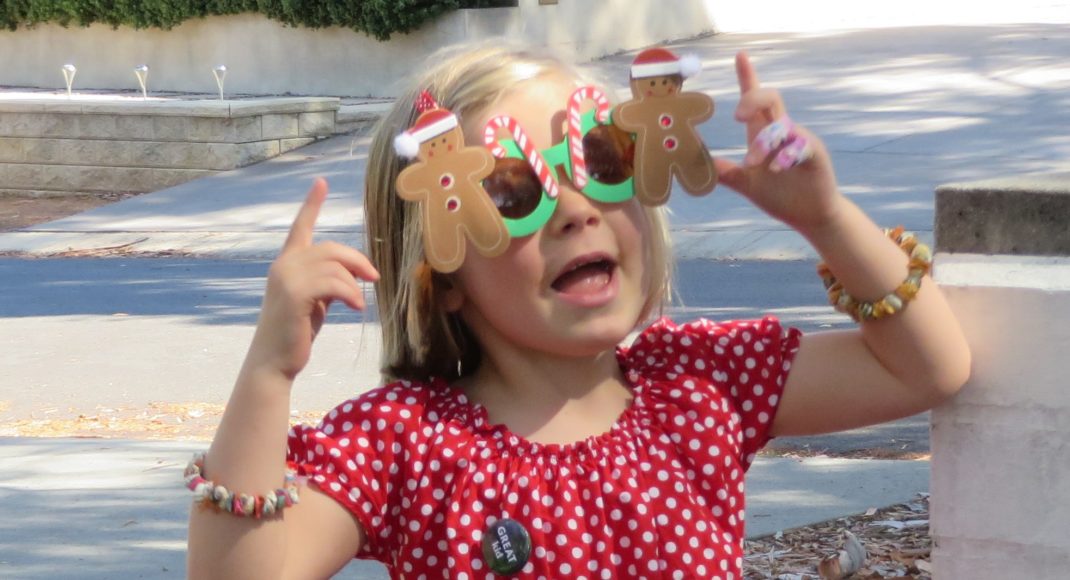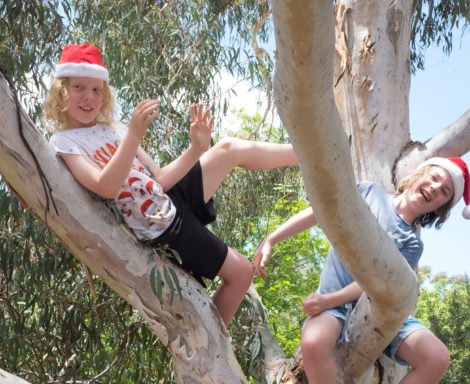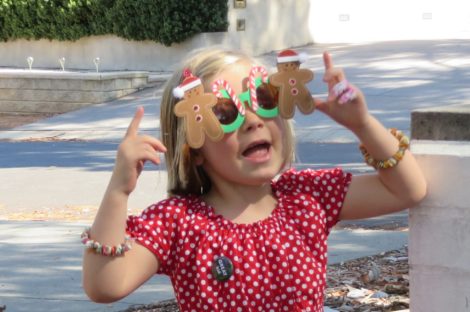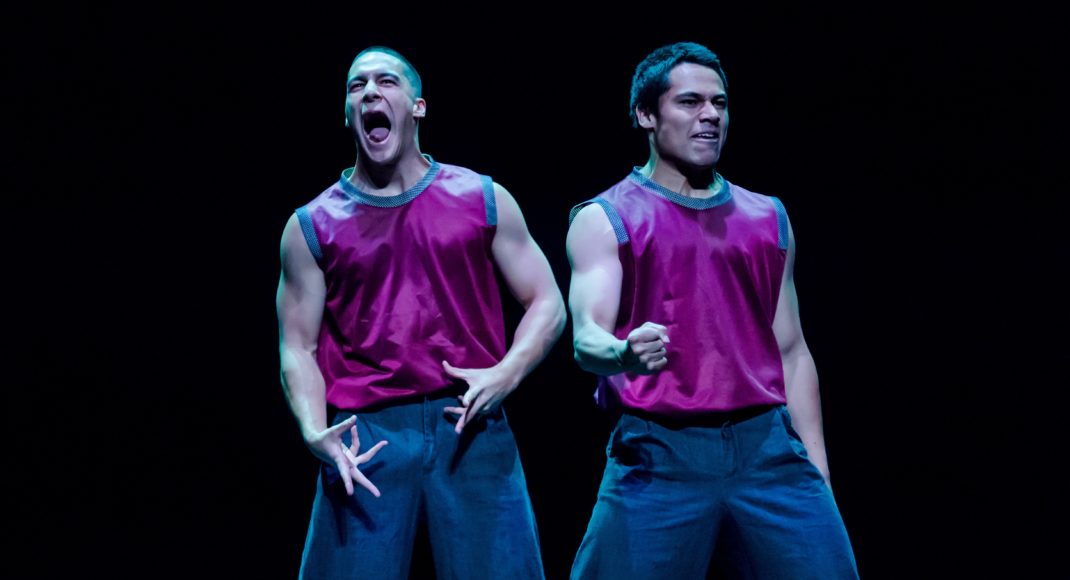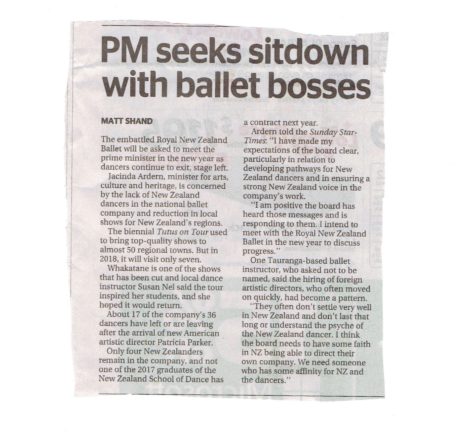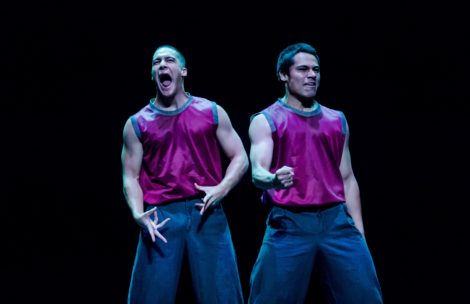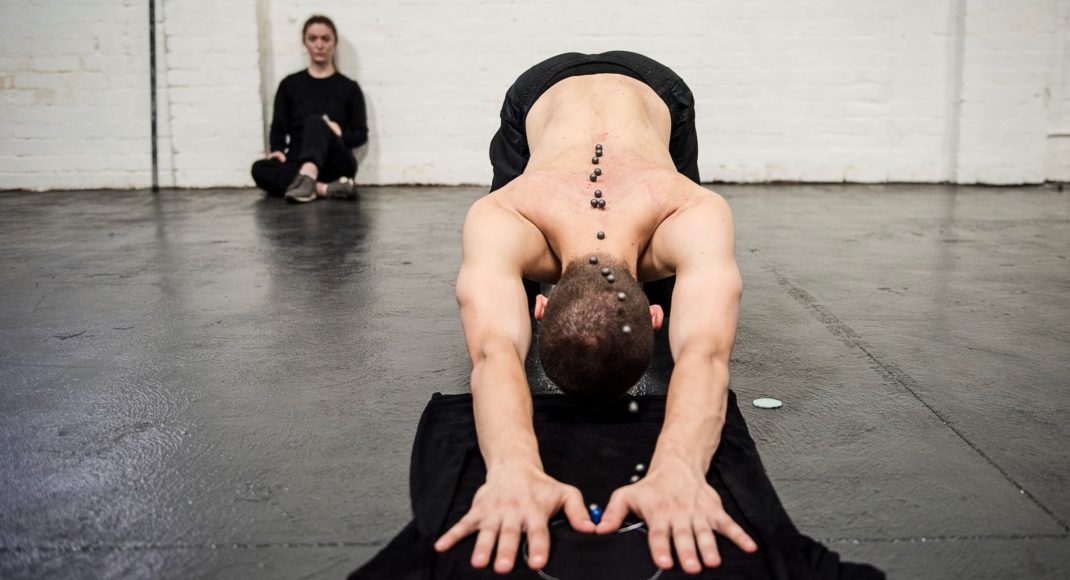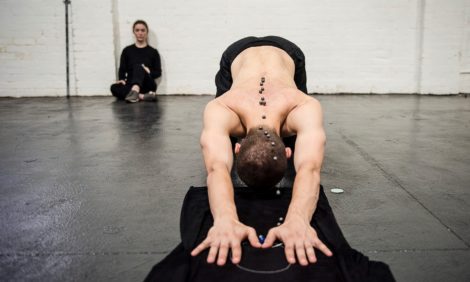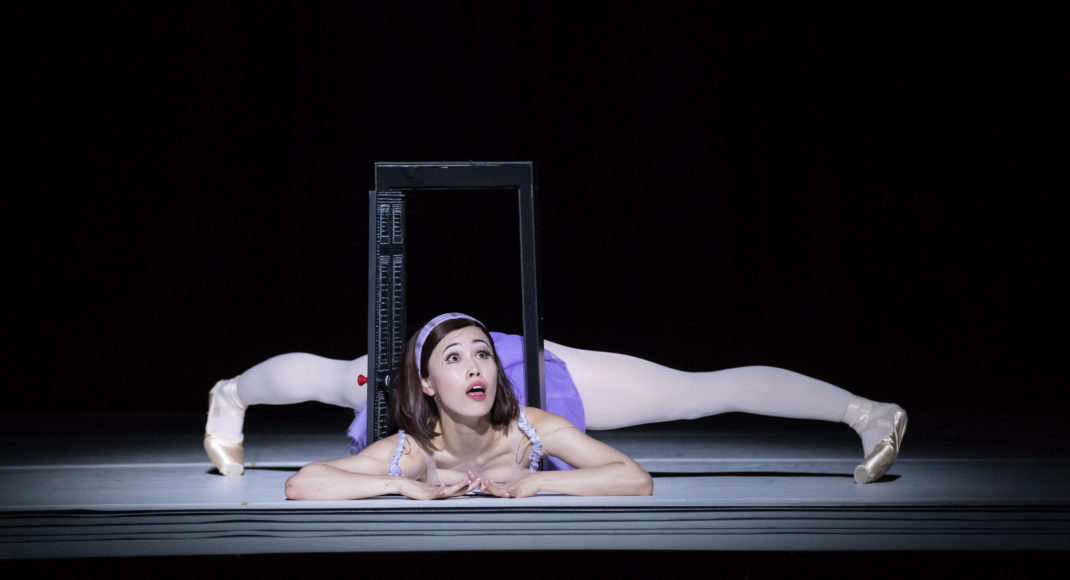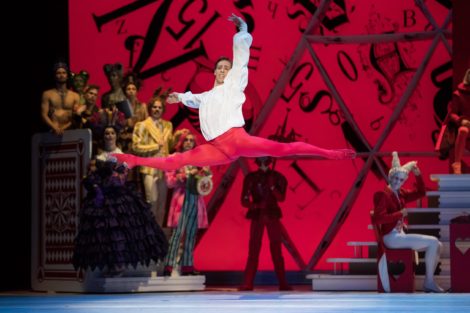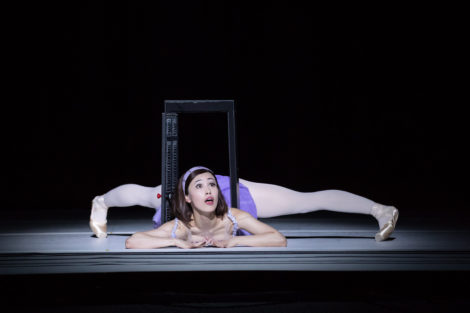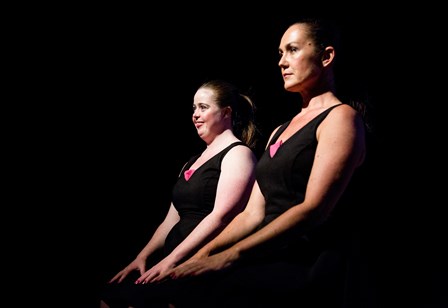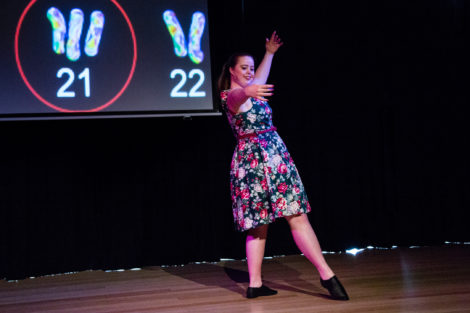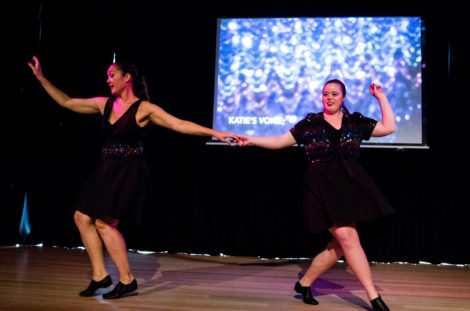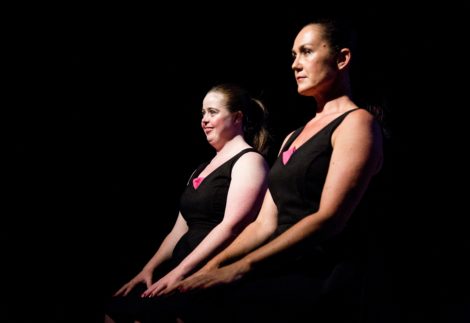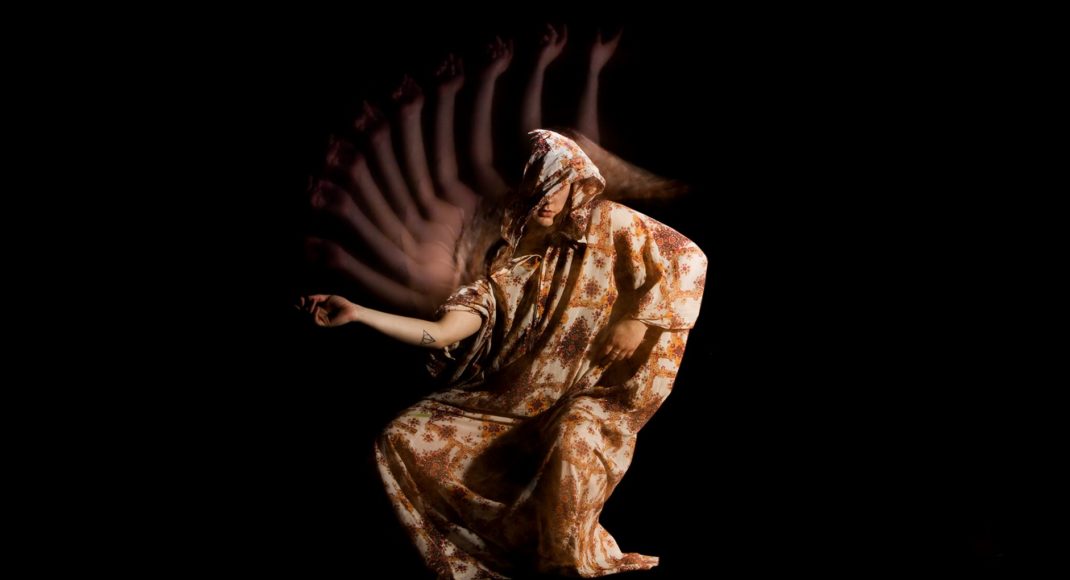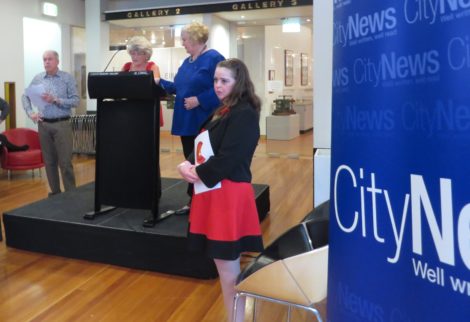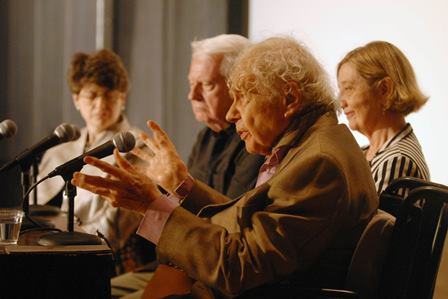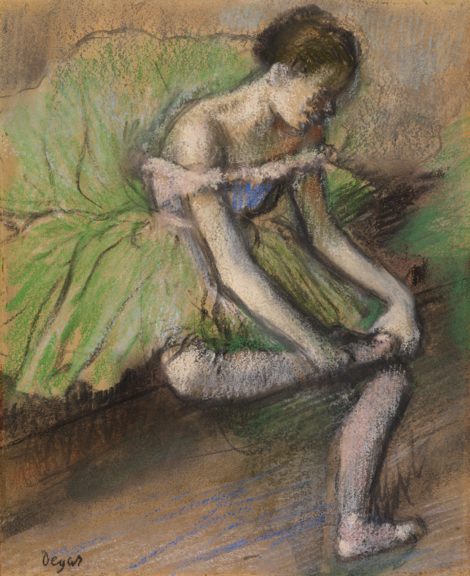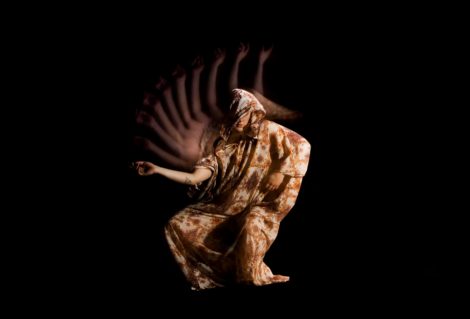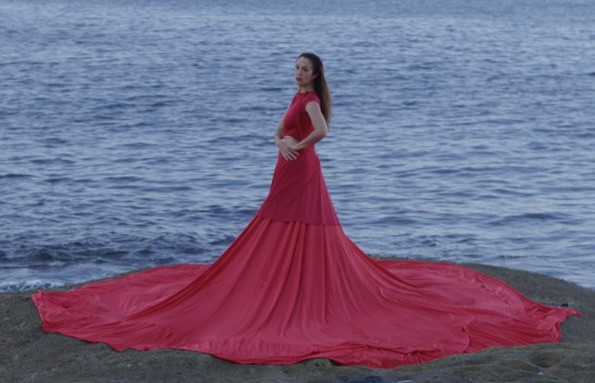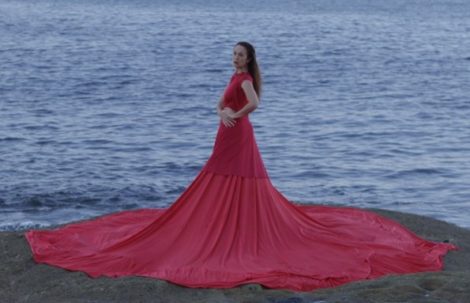A recent acquisition by the National Portrait Gallery in Canberra is a short 6 minute film featuring ex-Bodenwieser dancer Eileen Kramer, aged 103 when the film was shot. This is a truly haunting film by Sue Healey, working with cinematographer Judd Overton. Kramer dances, seated for the most part, to a gentle musical score composed by Darrin Verhagen and Justin Ashworth. The choreography is simple. Kramer uses her hands and lifts and turns her head occasionally. Simple but in the end quite moving.
The production is quite stunning with beautiful lighting that sometimes shines onto Kramer’s face, illuminating it with halo-like effect. White smoke haze is blown across the space occasionally. Kramer uses a white cloth fan at times. It is quite large when unfolded and the edges of the cloth extend over the frame so that there are gorgeous moments of tiny movement when the fan is moved. The chair Kramer sits has an antique look to it and is placed on a length of grey fabric that cascades along the floor. The colour scheme throughout is white and various shades of grey.
Here is the wall caption from Healey:
- Eileen is a portrait of a dancer. Eileen joined the Bodenwieser Ballet—Australia’s first modern dance company—in 1939 and then spent many years living in India, Europe and America before returning to Sydney in 2014. She was living at Thurles Castle, ‘a home for the potentially homeless’, in Chippendale, Sydney, when I first met her, and we have collaborated on many projects since then. At 103 years of age, Eileen Kramer continues to create: she performs, designs costumes, draws and writes on a daily basis. A painted portrait of Eileen, by surgeon Dr Andrew Greensmith, was a finalist in the 2017 Archibald prize: she thinks it is a lovely portrait but notes that it does not move. This portrait does.
So worth a visit to the Portrait Gallery!
Listen at this link to Eileen speaking for the National Library’s oral history program.
UPDATE, September 2018. Eileen won a 2018 Australian Dance Award for Outstanding Achievement in Film or New Media.
The film is now available at this link. https://vimeo.com/244582079.
Michelle Potter, 18 February 2018
Featured image: Eileen Kramer in the film Eileen

